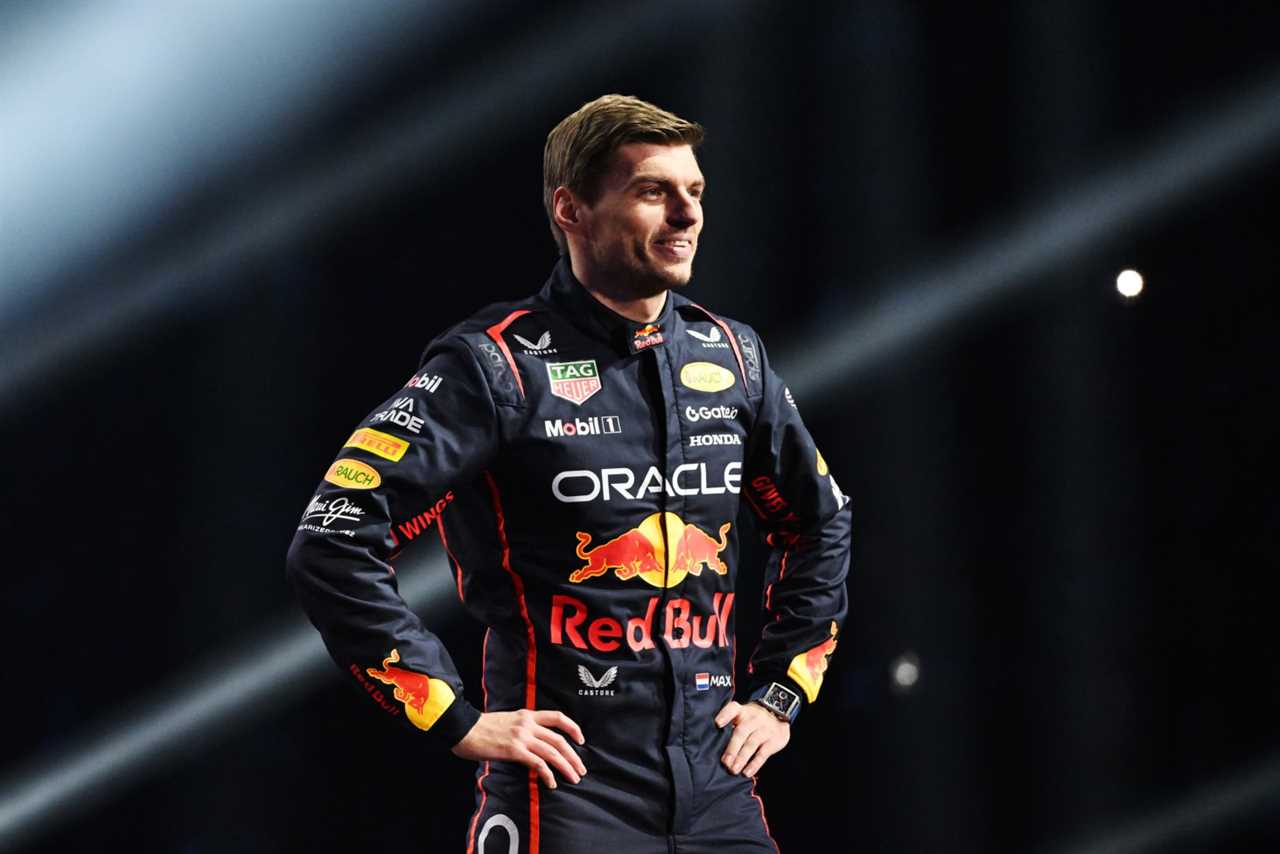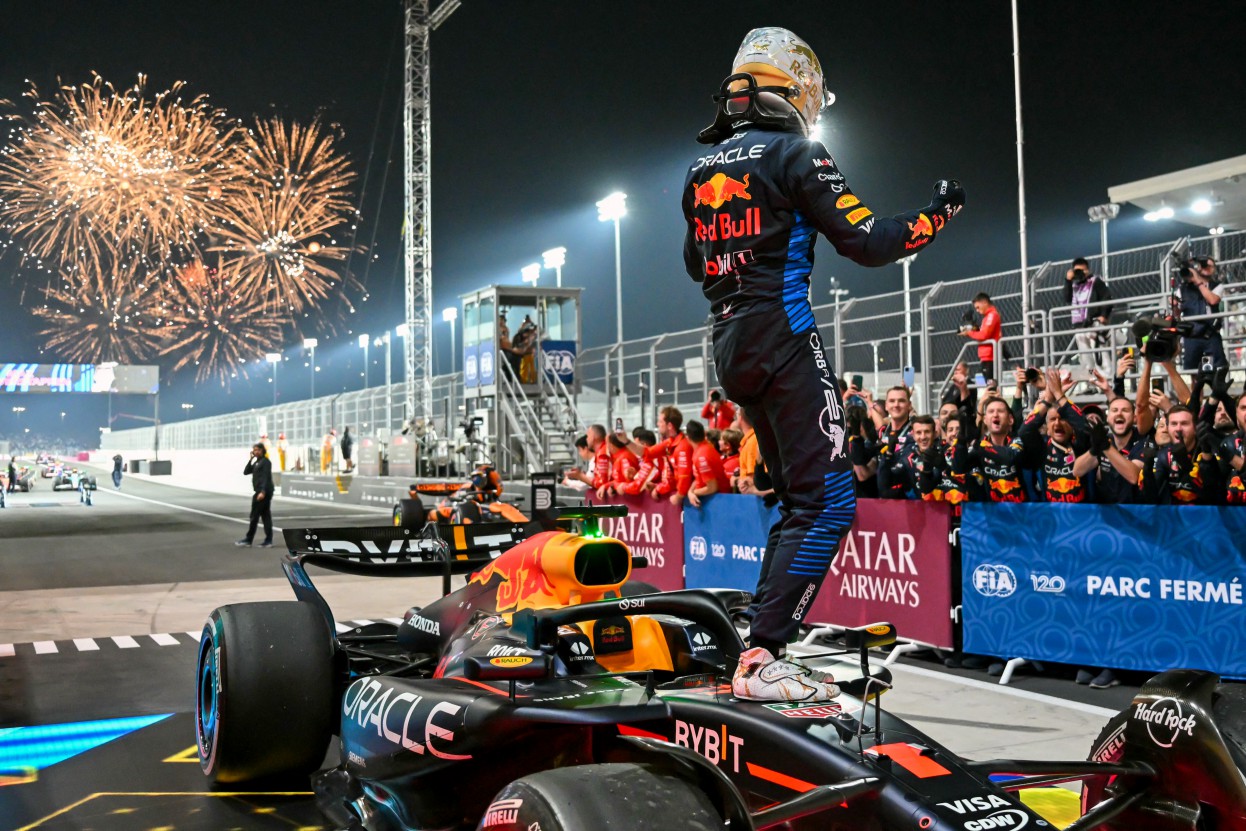
Jesus. I've been covering F1 since 2012, and the number of times I've had to explain this whole "number 1" thing to my non-racing friends is getting ridiculous. My brother-in-law texted me at 2am last weekend: "Why does Max get special treatment with his number?" Like I'm some kind of F1 helpdesk that never sleeps.
So here we go again.
Audio Summary of the Article
The Champion's Privilege (That Lewis Never Wanted)
If you've been watching F1 lately, you've probably noticed that Max Verstappen—the Dutch racing phenom who's absolutely dominated the sport for FOUR straight years—sports a big fat "1" on the nose of his Red Bull machine. It's not just some random design choice or Red Bull flexing their superiority complex (though God knows they love doing that).
The number 1 is actually a special privilege that only the reigning world champion can claim. It's like the racing equivalent of those "World's Best Dad" mugs, except it's actually legitimate.

But here's teh interesting part—it's completely optional. Lewis Hamilton, despite winning approximately a bazillion championships (okay, seven), has always stuck with his trusty number 44. I asked him about this at Silverstone back in 2018, and he just shrugged and said, "Forty-four's my soul number." Whatever that means. The man spent $4K on crystals last year according to paddock gossip, so I stopped questioning his decisions long ago.
When Max Ditched 33
Verstappen used to race with number 33. Had it plastered all over his merchandise. Fans with "33" tattoos. The whole deal.
Then he won that controversial 2021 championship (don't get me started—my editor still refuses to sit next to me when this topic comes up). The moment he clinched that title, he immediately switched to number 1 faster than Netflix could turn it into dramatic content.
Honestly? I respect the move. If I'd won a world championship after that Abu Dhabi mess, I'd probably have the number 1 tattooed on my forehead.
F1's Weird Number Rules (That Nobody Asked For)
Prior to 2014, F1 assigned numbers based on team standings. Boring system. Then they switched to letting drivers pick their own permanent numbers—kinda like jerseys in other sports, except with more expensive laundry.
Every driver gets to choose their racing number when they enter F1, and that number stays reserved for them for up to two years after they leave. Which explains why nobody's grabbed number 6 since Nico Rosberg rage-quit the sport after beating Hamilton in 2016.
Poor Lando Norris. Kid's been stuck with number 4 while watching Verstappen parade around with the 1. His race engineer told me at a bar in Monaco: "He checks Max's car every morning hoping the '1' fell off overnight." I'm only half sure he was joking.
The 2025 Calendar Will Destroy Your Sleep Schedule
Look, I could list every single race weekend here with all the practice times, but that would make this article longer than the contract negotiations between Hamilton and Ferrari. Plus, I'd rather you visit our website repeatedly for updated schedules (my performance bonus depends on it).
But seriously—if you're planning to watch every session this season, just warn your family now that you'll be a sleep-deprived zombie from March through December. The Australia-China-Japan triple header in March/April alone is going to require more caffeine than an espresso factory.
The season kicks off in Australia (March 16th, 4am GMT—why do they hate our sleep patterns?), then bulldozes through 24 races across five continents before wrapping up in Abu Dhabi on December 7th.
Will Anyone Stop The Verstappen Express?
As we head into 2025, the big question is whether anyone can pry that number 1 off Verstappen's car. Hamilton's making one last desperate grab for championship number eight before he moves to Ferrari next year. Norris keeps getting tantalizingly close. And let's not forget George Russell, who my mechanic friend at Mercedes swears is "ready to eat Verstappen's lunch" this season.
Personally? I've got $50 riding on Verstappen making it five in a row. Not because I like it, but because I've lost enough money betting against him since 2021.
And if he does win again? That damn number 1 stays exactly where it is.
Frequently Asked Questions
What is the financial impact of Formula 1 sponsorship?
Formula 1 teams rely heavily on sponsorships to maintain their financial stability. Sponsorships are a crucial source of income to help cover the high costs of racing. Sponsorships can range from small, logo-based contributions to major, title sponsorships worth tens of millions of dollars annually. These partnerships are essential for teams to sustain their operations and remain competitive.
What costs are excluded in the Formula 1 budget?
Formula 1 budgets allow teams to be flexible by excluding some expenses. Exclusions usually include marketing expenses, driver salaries, salaries of the three top executives or personnel and costs associated with non F1 racing activities. Capital expenditures, expenses related to corporate tax and employee benefits or bonuses are also excluded from the cap.
How has the introduction of hybrid power units affected Formula 1 team costs?
In Formula 1, the introduction of hybrid engines has led to a greater level of technological complexity, and therefore, increased costs. These hybrid engines are expensive to develop, produce, and maintain, which has led to a rise in team costs since their introduction in 2014 Due to the shift towards hybrid technology, increased budgets are needed for research and developments to remain competitive.
What are the transport and logistic costs in Formula 1?
Formula 1 racing is a highly competitive sport, with many aspects that are expensive and crucial. These include transport and logistics, which involves the shipping of cars, equipment and personnel all over the world. Teams can spend between $8 million and $10 million per season on logistics, though larger teams with more equipment may incur even higher costs.
What's the cost of Formula 1 teams' pit stop equipment?
The equipment employed by a Formula 1 team during a pit stop is a key factor in the competitive strategy and can be extraordinarily costly. Costs for high-tech wheel jacks, communication systems and wheel guns can range between $100,000 and $500,000, depending on the equipment.
How much will wind tunnel costs and simulator costs affect the budget of a Formula 1 Team?
Formula 1 car development is not possible without wind tunnel testing and the use of simulators. Wind tunnels can cost up to $100,000 a day. Full-scale simulators, on the other hand, may cost several millions of dollars at first. These facilities have a significant impact on the budgets of teams.
How much do Formula 1 racing suits cost?
Formula 1 racing suits are designed for comfort, safety and performance. They incorporate fire-resistant materials as well as cutting-edge technologies. These suits cost between $2,000 and $5,000. Their bespoke design and advanced safety features are reflected in their price.
Statistics
- Racing suits worn by Formula 1 drivers can cost from $2,000 to $5,000, integrating high levels of safety and performance features.
- The operational costs for a Formula 1 team per season can range from $120 million to over $400 million, depending on the team's size and aspirations.
- The financial cost of a Formula 1 car crash can range from a few tens of thousands to over $1 million, dependent on the extent of the damage.
- The budget cap introduced in Formula 1 for the 2021 season was set at $145 million, which is aimed to level the playing field.
- Pirelli F1 tires cost around $2,700 each, resulting in a set of four tires costing approximately $10,800.
- Formula 1 teams may spend up to $10 million on the engine alone, due to the high level of technology and performance required.
- A Formula 1 car's carbon fiber body parts, essential for performance and safety, contribute significantly to the overall production costs of the vehicle.
- An advanced Formula 1 steering wheel can cost between $50,000 to $100,000 given its multifunctionality and custom design.
External Links
How To
How to Optimize Pit Stop Strategy for Formula 1
To optimize your pit stop strategy, you need to plan and analyze meticulously. Plan timings according to tire wear and fuel consumption. It is important to train the pit crew in order to ensure they can change tires quickly, refuel and make minor adjustments. Simulate different scenarios to see how they might unfold during the race. Keep an eye on the competitors' strategies, and be flexible enough to make adjustments in real time. Investing high-quality equipment will help to make pit stops faster and more reliable.
 CricketBoxingFormula 1GolfHorse RacingPremier LeagueTennisPrivacy PolicyTerms And Conditions
CricketBoxingFormula 1GolfHorse RacingPremier LeagueTennisPrivacy PolicyTerms And Conditions
